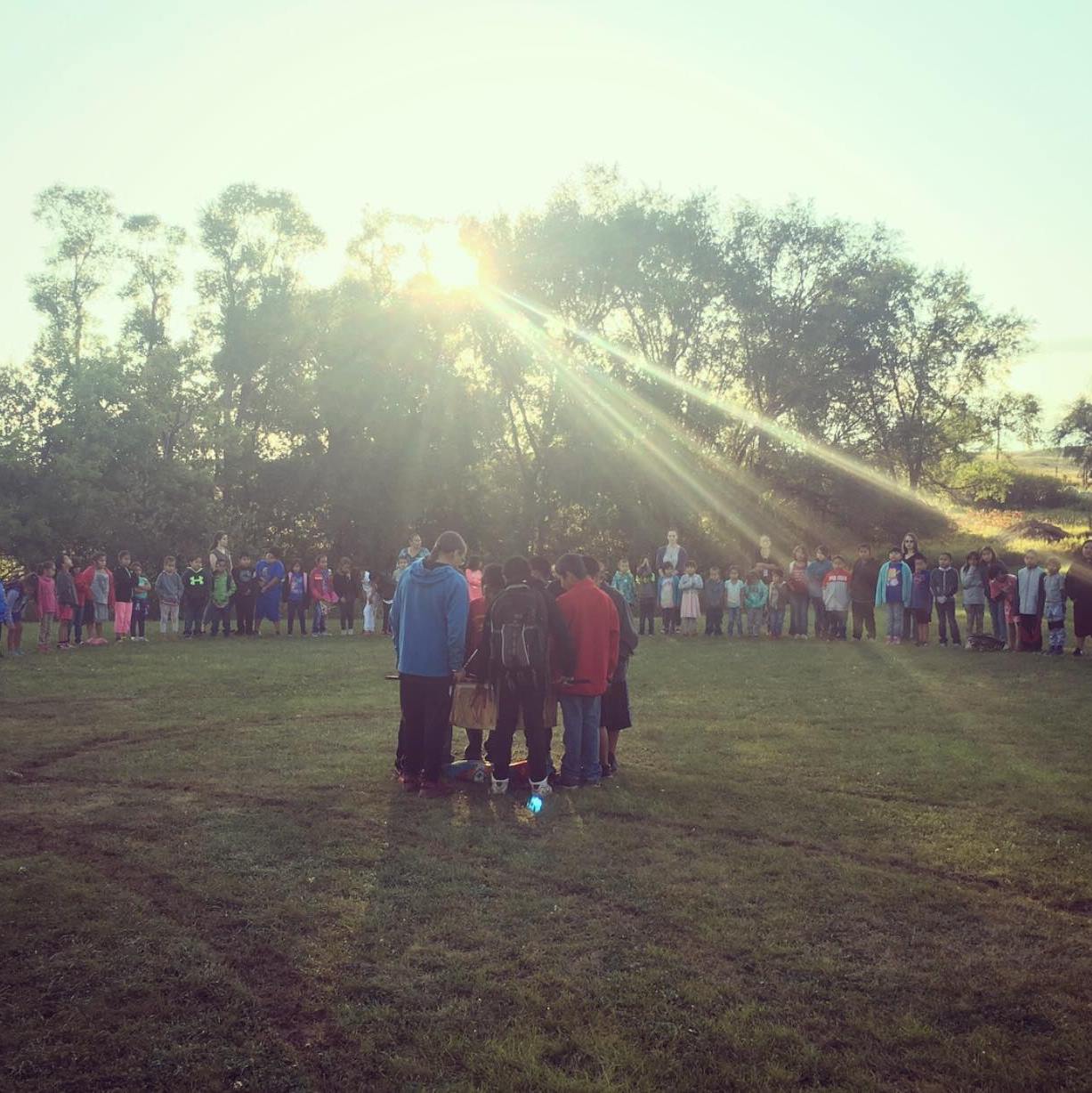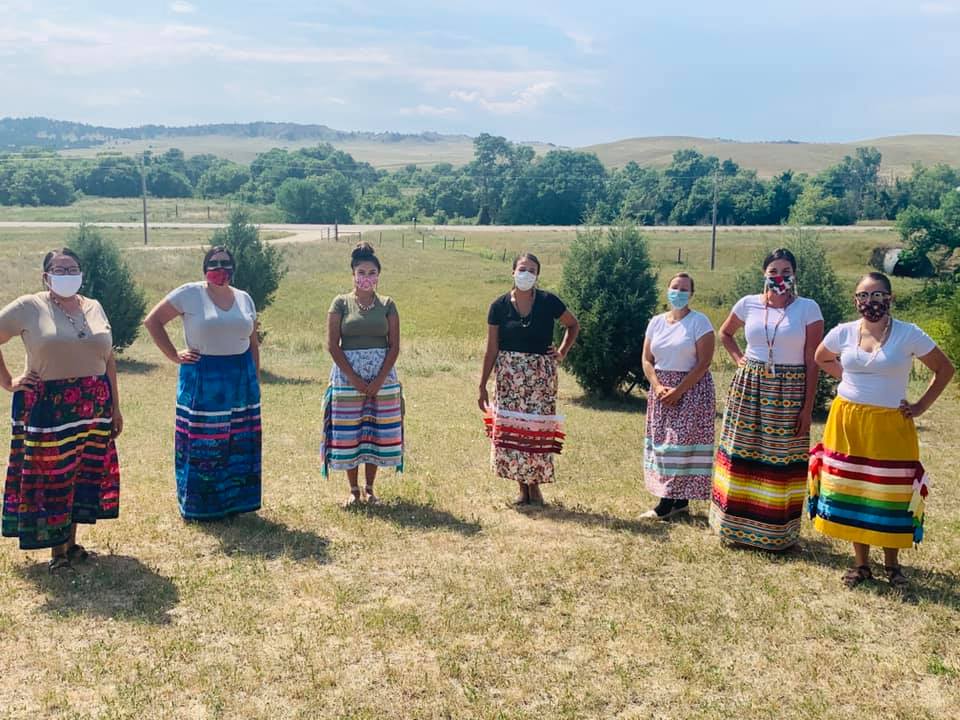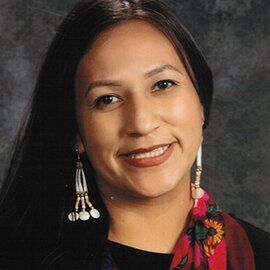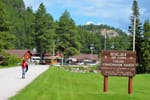Editor’s note: This is the first of two parts of a look at the status of Native American education in South Dakota amid the COVID-19 pandemic. Part 2, coming Oct. 7, will examine one school district’s successful efforts to build an online education network.
The COVID-19 pandemic has made providing a quality, culturally relevant education to the children on South Dakota’s nine Native American reservations more difficult than ever.
Even as schools have provided students with new learning tools and better internet access, the widespread move to remote teaching and learning has educators worried that the longer the pandemic continues, the further their Native students will fall behind.
As the deadly COVID-19 pandemic continues unabated in South Dakota, Native leaders have taken strong steps to prevent the spread of the disease and protect vulnerable populations on reservations.
Closing schools and moving to online education has been part of that prevention effort, and there is little indication that students, teachers and staff can safely host in-person classes anytime soon. To adjust to the new reality, reservation schools and teachers have been forced to quickly create and adopt new online, distance-learning programs, many of which have never been tried before.
“It is a huge change; I don’t know if there’s any other way to put it,” said James Curran, executive director of Teach For America’s South Dakota branch. “The schools that we work with, some of them are still trying to figure out tech stuff and laptops and internet-access questions, so there’s still a lot that isn’t fully solved.”
Teach For America has helped reservation schools in South Dakota find, train and retain new teachers for more than a decade. The organization had to scramble to adjust its training format in order to help prepare the 17 new teachers it brought into South Dakota this year for an entirely new way of teaching.
“The format is completely new and no one really knows how to do it that well yet,” Curran said.

"It's a huge change ... the schools that we work with, some of them are still trying to figure out tech stuff and laptops and internet-access questions, so there's still a lot that isn't fully solved." – Jim Curran, Teach for America director in South Dakota
Education experts have said that distance learning, even under ideal conditions, cannot match the quality of in-person education delivered in a classroom, a fact that may be exacerbated on reservations where students often benefit from the cultural, spiritual and emotional connections formed with teachers when learning in person. Distance learning has also led to lower attendance and engagement by students at some schools.
Reservations in South Dakota are mostly remote, isolated places and are home to some of the poorest communities in the United States. Many people who live on reservations face challenges in getting healthy food, basic healthcare and quality housing, all of which contribute to the challenges schools face in educating children, whether they are Native American or not. Reliable access to the internet, an essential tool for modern life, also can be expensive and difficult to find on reservations.
During the 2018-19 school year, the latest year for which data is available, fewer than one in four Native American students in grades three through eight and grade 11 scored as proficient in reading and writing on state standardized tests. Roughly one in seven Native American students scored as proficient in math, and just one in eight was proficient in science.
A separate test, the 2019 National Assessment of Educational progress, found that Native American fourth and eighth grade students in South Dakota were between 25 and 30 points behind their white peers in math and reading.
Native American students in South Dakota are served by several distinctly different educational systems. Most of the state’s Native American students attend traditional public schools that are funded by local property taxes as well as state sales taxes and are governed by locally elected school boards. The federal Bureau of Indian Education, meanwhile, operates three schools in the state and helps fund dozens of tribal grant schools, which are governed by tribal leaders. Several privately funded and governed schools also serve Native American students in the state.
Several public school districts, such as the Oglala Lakota County School District and the Smee School District, north of Mobridge, are located entirely on reservations and serve student populations that are almost entirely Native American. Those districts and many private schools took cues from tribal leaders and also decided to begin their 2020-21 school years with distance learning only. Tribal grant schools also chose to begin the school year remotely.
An Aug. 6 letter the BIE sent to tribal leaders announced that the agency would delay the start of its school year until Sept. 16 and would work with tribes to decide whether to open school buildings as part of its “Return to Learn” plan.
“COVID-19 is an unprecedented challenge to tribal governments, BIE schools, and all our communities on a scale never before experienced,” said BIE Assistant Secretary Tara Sweeney said in the letter. “I am confident that we will join together to address these unique challenges.”
One of the biggest challenges reservation schools have faced, whether they’re run by the BIE, local school districts, tribal governments or are privately funded, is the widespread lack of high-speed internet access among their students. Tribal governments, school boards and even private companies have pitched in to at least temporarily fix the problem.

Improving internet access a priority
Some tribes and school districts were able to use their portion of the $8 billion set aside for tribal governments in the federal CARES Act to buy computers, iPads and cellular hotspots for connecting to the internet that students can use at home. Providing students with high-speed internet access was a major accomplishment and teachers say will be invaluable for their students now and in the future.
Students who rarely had the opportunity to use computers now use them everyday. Learning to use technology will be invaluable later in their lives, said Grace Delaney, a first- and second-grade teacher at He Dog Elementary School on the Rosebud Indian Reservation in south-central South Dakota.
“Being able to navigate a computer and type is a skill and is a part of learning and they finally have that tool,” Delaney said. “It shouldn’t have taken a pandemic for them to receive that tool.”
At He Dog elementary, the summer of 2020 was spent planning and revising methods to teach at least the first quarter of the 2020-21 school year online. The school is part of the Todd County School District, one of several South Dakota public school districts that almost exclusively serve Native American students.
The Todd County district covers most of the Rosebud reservation and serves about 2,000 students, more than 95% of whom identify as Native American. As in all of South Dakota’s public school districts, the pandemic forced Todd County schools to finish the 2019-20 school year by teaching remotely.
But unlike most of the state’s other districts, Todd County’s students largely did not have access to high-speed internet connections. The district’s schools also didn’t have enough computers or iPads to provide a computer or tablet to every student who needed one to access virtual classrooms. As a result, much of the 2019-20 final quarter was spent reviewing what students had learned earlier in the year through the use of worksheets delivered to student homes.
“It was, honestly, nothing short of devastating to lose the rest of the school year last year,” said Lela Biggus, an English teacher for fourth and fifth grade students. “I love teaching fifth grade, and we established a really awesome classroom culture, and to kind of have that cut short didn’t feel good.”
Teachers were forced to use phone calls to try to help students when needed and maintain the relationships they’d built with students and parents, Biggus said. Teaching with packets also prevented teachers from introducing students to new material, meaning students likely would start their next school year behind where they should have been.
“You need the internet to do distance learning,” Biggus said. “We can’t afford to not deliver new content to our students. Many, if not all, of our students are behind grade-level. And I think that the achievement gap, right now, you can really feel the potential for that widening if we don’t step up 110% as educators.”
Over the summer, federal coronavirus relief funds, provided through the CARES Act, helped the district pay for Chromebooks and to secure internet access for each student. The district also invested in an online teaching platform called Schoology, which serves as a hub for student school work. Teachers also were trained in the use of Zoom so they could deliver instruction and meet with students via video conference.
Schoology functions as a social network similar to Facebook in which teachers can create and share assignments and other class materials, take class attendance and message students directly about their work. Students can do their work on the platform and keep in touch with their teachers. Parents can also create schoology accounts in order to monitor their children’s learning.
The 2020-12 school year started for Todd County on Sept. 14 and the switch to online learning hasn’t been easy.
As a teacher, Delaney said she prefers not to stand up in front of her classes and lecture. Instead, she tries to help students learn for themselves and from one other as much as possible. But it’s much harder for students to work together if they’re miles apart from each other, even if they have access to Zoom video conferences.
Delaney said she’s been breaking her classes up into small groups for Zoom teaching sessions, which makes things a little easier, but which required her to completely change her style of teaching.
Using Zoom makes it more difficult to develop relationships and trust between teachers and students, Delaney said. Students need to be able to trust their teachers in order to feel comfortable in their learning environment and to accept what they’re being taught, so without trust, students don’t perform as well.
The second-graders that Delaney is teaching are actually doing very well, she said. Their transition to remote learning was eased, Delaney said, because she was able to develop relationships and trust with them last year when they were in her first-grade class.
“We have a very constructive, innovative and creative time together because we know each other,” Delaney said.
Delaney’s current crop of first-graders, though, is still trying to figure her out. Trust takes time to develop in any new class but the process is eased if interactions are occurring naturally throughout each day.
Delaney said she has built one-on-one time into her students’ classroom routine, even more time than which generally occurred during in-person class times. That extra time has helped her get to know more about her individual students. But Delaney is still worried that she’ll struggle to earn the trust of her first-graders through remote learning.
Biggus, meanwhile, said she’s seen some encouraging signs from her fourth- and fift-graders. Through the first couple of days of teaching, her classes were seeing almost perfect attendance.
“The fourth- and fifth-graders have really stepped it up,” Biggus said. “I can see their intrinsic motivation for learning right now.”
Another advantage to online teaching, Biggus said, has been an increase in parental involvement with their children’s education in some cases.
“It is absolutely necessary to have a positive relationship with your student’s family, and to be in constant contact and communicating and working together, because we’re partners in their child’s education,” Biggus said. “I think there’s something really, really cool about that.”

Pine Ridge school continues its mission
The Pine Ridge Girls School was rounding out its fourth year of teaching young women on the Pine Ridge Reservation in southwestern South Dakota when the COVID-19 pandemic began.
The privately funded, all-girls middle and high school is about 10 miles outside the community of Porcupine. The school was founded in 2016 with the goal of providing Native American girls in seventh through 12th grades with an academically rigorous but also deeply personal education, said Head of School April Johnston.
Class sizes in each grade level at the school are intentionally kept small, with about 10 students each. The idea is to provide another support system both in and out of the classroom to Native students, many of whom are struggling against the effects of generational poverty in addition to the historical traumas inflicted upon Native populations.
“The whole vision of our school is to help empower young Native women to become leaders, and so we cater to whatever needs they have. We’re looking at different aspects of emotional growth, physical growth and, of course, academic growth,” Johnston said. “We do have really high academic standards but we try to look at the child as a whole.”
The COVID-19 pandemic forced the school to shut its building down, and teachers had to switch to a remote teaching model to finish out the 2019-20 school year. The critical hands-on aspect of the Pine Ridge Girls School mission was almost impossible to maintain.
“I think one of the biggest challenges of this whole pandemic is how do we stay true to ourselves and what we believe in as a school, but still make sure that we’re following safety protocols,” Johnston said.

“I think one of the biggest challenges of this whole pandemic is how do we stay true to ourselves and what we believe in as a school, but still make sure that we're following safety protocols." -- April Johnston, Pine Ridge Girls School
Maintaining the relationships between teachers, students and families while at the same time taking measures to prevent the spread of COVID-19, was a big challenge, Johnston said.
Pine Ridge was hit hard by the pandemic, both in terms of illness and economically. The tribal government instituted restrictions on travel and gatherings within the reservation as well as curfews in an attempt to slow the spread of COVID-19. The difficult steps were deemed necessary because Native communities have higher rates of chronic illnesses, such as diabetes, which are comorbidities with COVID-19. Gaining access to healthcare is also a constant challenge.
Pine Ridge Girls School teachers didn’t take much, if any, time off over the summer. Instead, they worked together to plan a new strategy for the fall. Eventually, like most other schools serving primarily tribal communities, they decided to not conduct in-person teaching through the first weeks of the 2020 school year.
“There was hope that we would do a hybrid model of partial in-person and partial online,” Johnston said. “Unfortunately, as things unfolded in South Dakota, it just became more apparent that it was the safer option to go online, especially for the reservation.”
The school gathers students from a 100-mile radius and most of the students come from poor families, many of which didn’t have ready access to the internet.
Pine Ridge Girls School donors helped fix the internet problem, Johnston said. A series of donations helped pay for hotspots and data plans from AT&T as well as computers that each student could take home.
With internet connections and computers for students, the school was able to start its 2020-21 school year on Aug. 25, weeks earlier than publicly funded schools. Through the first month of online-only instruction, daily attendance had averaged about 80%, which was considered pretty good for virtual classrooms, Johnston said.
But the challenge of maintaining the school’s focus on the personal wellbeing and emotional growth of each student remains. Relationships are less personal in online settings and phone conversations do not provide the same level of interaction that teachers had with students and their parents.
“The question that we’re kind of facing is, ‘How do we support [our students] emotionally? How are we making sure that we’re still engaging our parents?’ It’s definitely not without a lot of challenges,” Johnston said.




